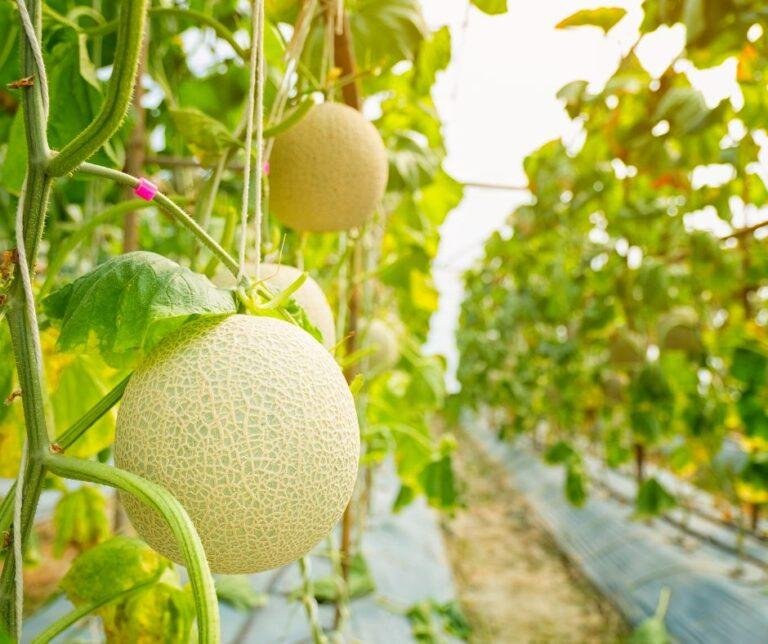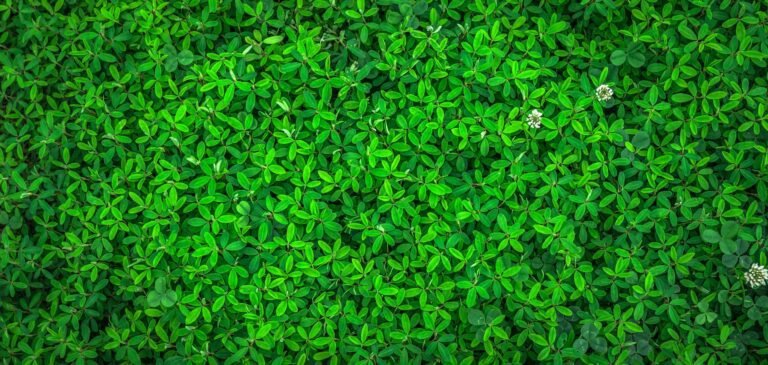Introduction to amaranth harvest
Amaranth harvest- Amaranth is an ancient grain known for its versatility and nutritional benefits, having been cultivated for thousands of years across various civilizations. Historically significant as a staple food for the Aztecs and other Mesoamerican cultures, amaranth was revered not just for its vibrant grain but also for its edible leaves, making it a dual-purpose crop. Today, this resilient plant is regaining popularity as a superfood due to its remarkable health benefits and adaptability to different growing conditions.
There are several species of amaranth, with Amaranthus caudatus, Amaranthus cruentus, and Amaranthus hypochondriacus being among the most widely cultivated. These species vary in color, grain size, and texture, offering a range of culinary applications. The grains are gluten-free, high in protein, and rich in essential amino acids, fiber, vitamins, and minerals, making them a nutritious addition to both vegetarian and non-vegetarian diets. Moreover, the leaves, often likened to spinach in flavor and nutritional profile, are used in various cuisines worldwide.

The resurgence of interest in amaranth can be attributed to the growing trend of health-conscious eating, as consumers become more aware of the nutritional value of traditional foods. Additionally, amaranth is valued for its resilience, capable of thriving in a variety of climates, thus presenting an excellent option for sustainable agriculture. Throughout this blog post, readers can expect to gain valuable insights into the amaranth harvest, including the best techniques, optimal timing for harvesting, and practical tips to maximize yield and quality. This comprehensive guide aims to equip aspiring growers with the knowledge needed to successfully cultivate, harvest, and enjoy the numerous benefits of amaranth.
Understanding the Growth Cycle of Amaranth
The growth cycle of amaranth is comprised of several distinct phases, each contributing to the overall development of the plant and ultimately influencing the timing of the amaranth harvest. Understanding these stages is essential for farmers and gardeners looking to optimize their yield.
The cycle begins with germination, which typically occurs within 7 to 14 days after sowing. During this initial phase, seeds absorb moisture from the soil, triggering enzymatic processes that lead to sprout formation. Optimal soil temperatures for germination range from 70°F to 85°F. Given that amaranth seeds are relatively small, they should be planted at a shallow depth to facilitate quick emergence.
Following germination, the plant enters the vegetative phase, which can last from four to eight weeks. During this period, the young plants focus on developing strong root systems and lush foliage. To support healthy growth, it is crucial to provide adequate water and nutrients, as amaranth is a nutrient-hungry plant. Regular weeding and monitoring for pests during this phase will help ensure robust development prior to flowering.
The flowering stage is a critical period in the life cycle of amaranth. This phase can occur around 60 to 80 days after planting, depending on the variety and growing conditions. Flowering is marked by the emergence of colorful inflorescences, which attract pollinators and facilitate seed production. Successful pollination greatly influences the yield and quality of the seeds, thereby impacting the eventual amaranth harvest.
Finally, maturity occurs around 90 to 120 days post-planting. The plants begin to dry out, and seeds harden within the seed heads. It is important to monitor the plants closely during this period to determine the optimal moment for harvesting, as timing can significantly affect the quality and quantity of the yields. Understanding this growth cycle will enable growers to plan effectively and achieve a successful amaranth harvest.
Determining the Right Time to Harvest Amaranth
Identifying the appropriate moment to initiate the amaranth harvest is crucial for maximizing yield and ensuring high-quality seeds. Understanding the maturity indicators of the plant can significantly aid in this process. One of the most notable signs that amaranth is ready for harvest is the change in seed color. As the seeds transition from green to brown and develop a hard texture, this can indicate that they are fully mature. Careful observation of the seed heads is essential; they should appear dense and begin to droop slightly, signaling that the seeds have filled out adequately.
Another critical indicator to assess is the wilting of the plant. As amaranth approaches maturity, the leaves will start to yellow and droop, indicating that the plant is diverting energy away from foliage towards the seeds. This natural process often occurs shortly before the seeds reach optimal maturity for harvesting. It is advisable to harvest amaranth when the majority of the seeds have turned brown, as waiting too long may result in significant seed loss due to shattering.
Weather conditions also play a significant role in determining the timing of the amaranth harvest. Ideally, harvesting should occur on a dry day, as excess moisture can lead to complications such as mold or difficulties in seed extraction. Monitoring local weather patterns in the days leading up to the harvest can help ensure that conditions are favorable. By observing the plant’s physical characteristics and considering atmospheric conditions, cultivators can effectively determine when to proceed with the amaranth harvest, ultimately enhancing both productivity and quality.
Tools and Equipment Needed for Harvesting
The successful amaranth harvest relies heavily on utilizing the right tools and equipment. Proper harvesting is essential to ensure minimal damage to the plants and to gather the seeds effectively. Key harvesting tools include sickles, scythes, and baskets, each serving a distinct purpose during the process.
Sickles are curved blades that are well-suited for cutting the stalks of amaranth plants. They are particularly effective for harvesting at ground level, allowing the user to efficiently remove the whole plant without excessive effort. When selecting a sickle, opt for one that is comfortable to hold and lightweight to minimize fatigue during long harvesting sessions. Regular maintenance, including sharpening the blade and ensuring the handle is sturdy, is essential to enhance performance and longevity.
Scythes are another critical tool for harvesting amaranth on a larger scale. They are designed for cutting down swathes of plants quickly and can be particularly useful when dealing with extensive amaranth fields. The scythe’s length allows for a sweeping motion that can significantly reduce the time taken for a harvest. Like sickles, scythes require regular upkeep; the blade must be kept sharp, and it is advisable to check the handle for any signs of wear.
Baskets come into play after the cutting phase. These are used to collect the harvested stalks and seeds efficiently. Choosing a basket with good capacity while remaining manageable is crucial, as overloading can lead to spillage and damage. Selecting baskets made from durable materials will ensure they withstand the rigors of repeated use during the amaranth harvest.
In conclusion, equipping oneself with the appropriate tools and maintaining them is vital for an efficient and effective amaranth harvest. With the right sickles, scythes, and baskets, the harvesting process can be streamlined, leading to better yield and reduced labor time.
Harvesting Techniques for Amaranth
Harvesting amaranth requires a thoughtful approach to ensure both the plants and seeds are preserved effectively. Depending on the scale of production, there are primarily two methods employed: hand-harvesting and mechanical harvesting. Each of these techniques has its own set of advantages, and understanding them is crucial for a successful amaranth harvest.
For smaller plots or gardens, hand-harvesting is often recommended. This method involves carefully cutting the seed heads at maturity, which generally occurs when the leaves begin to yellow and the seeds become hard and dark. To initiate the hand-harvesting process, begin by selecting a clear, dry day. Using a sharp knife or scissors, cut the seed heads off about six inches below the base. It is vital to handle the plants gently to minimize damage to both the foliage and the seeds. Once collected, the seed heads should be placed in a clean, dry container to prevent moisture accumulation that can lead to mold.
For larger commercial operations, mechanical harvesting presents a practical solution. This technique often utilizes a combine harvester fitted with specific attachments for amaranth. Prior to harvesting, it is essential to set the machine according to the height and thickness of the amaranth plants. The harvester should be adjusted to ensure that it effectively captures the seed heads without excessively bruising the plants. After harvesting, the seeds require thorough cleaning to remove debris and ensure that they are ready for processing.
Whether using hand or mechanical techniques, it is essential to harvest amaranth at the right time and with care to maintain the quality of the seeds. With these methodologies, growers can achieve an efficient and successful amaranth harvest.
Post-Harvest Processing of Amaranth
After the amaranth harvest, it is crucial to implement effective post-harvest processing methods to maintain the quality of the grains. The first step involves drying the harvested amaranth plants to ensure that moisture levels are adequately reduced. High moisture can lead to mold growth and spoilage, negatively impacting the grains’ taste and longevity. Ideally, the amaranth plants should be dried in a well-ventilated area, preferably under the sun, for several days. However, it is essential to check for signs of excess moisture, as overexposure can degrade seed quality.
Once the amaranth has dried sufficiently, the next process is threshing. This step involves separating the seeds from the flower heads or pods. Manual threshing can be performed by beating the dried flower heads on a hard surface, or using specialized tools designed for this purpose. While mechanical threshers can expedite the process, care should be taken to avoid damaging the seeds during this operation.
Following threshing, the seeds need to be cleaned to remove any remaining debris, chaff, or damaged seeds. Cleaning is vital to ensure that the final product maintains a high quality. A common method for cleaning amaranth seeds is using a series of sieves to separate seeds of different sizes, ensuring the removal of impurities. In addition, a fan can be used to blow away lighter debris, resulting in cleaner seeds ready for storage.
Proper post-harvest processing of amaranth ensures a high-quality end product. By following these best practices for drying, threshing, and cleaning, growers can preserve the flavor and nutritional benefits of amaranth while extending its shelf life. Implementing these techniques will ultimately contribute to a more successful and sustainable amaranth harvest.
Common Challenges and Solutions During Harvesting
The amaranth harvest can present several challenges that may hinder the overall yield and quality of the crop. Understanding these obstacles is crucial for successful collection and processing. Weather conditions are one of the foremost challenges encountered during the harvesting phase. Prolonged rain can lead to increased moisture levels in the grains, making them prone to mold and rot. In contrast, drought conditions can lead to shattering of the seeds, which results in loss of yield. It is advisable to monitor weather forecasts closely and plan the harvest during dry periods to mitigate these risks.
Pest infestations also pose significant threats during the amaranth harvest. Various insects, such as birds and beetles, are attracted to the colorful, nutrient-rich seeds. Implementing integrated pest management strategies can effectively minimize these issues. Utilizing physical barriers, such as netting or mesh covers, can protect the crop while also reducing the need for chemical pesticides. Additionally, practicing regular field monitoring can help detect and address any pest problems before they escalate.
Labor constraints represent another challenge faced by many growers during the amaranth harvest. Limited availability of skilled labor can slow down the harvesting process, which is particularly concerning when timed with optimal weather conditions. To address this issue, it may be beneficial to invest in training local workers, focusing on efficient harvesting techniques that expedite the process. Furthermore, employing mechanized harvesting equipment can significantly reduce labor demands and increase productivity.
By preparing for these common challenges—weather effects, pest issues, and labor constraints—farmers can ensure a smoother amaranth harvest. Emphasizing proactive management strategies and leveraging available resources will lead to improved results and a more successful harvest season.
Storage Tips for Preserving Amaranth Quality
Proper storage of amaranth, whether in seed or leaf form, is essential to retain freshness and nutritional quality. The amaranth harvest can be an abundant yield, but if not stored correctly, it may lose its valuable properties and suffer spoilage. Therefore, it’s crucial to consider various factors such as humidity, temperature, and suitable containers when storing your amaranth.
First and foremost, humidity plays a significant role in the preservation of amaranth. Ideally, the storage environment should maintain a low humidity level, ideally below 15%. High humidity can lead to mold and mildew growth on amaranth seeds and leaves. To reduce humidity, use a dehumidifier in storage areas if necessary. Additionally, it is recommended to dry amaranth leaves and seeds thoroughly before storage to help prevent moisture-related issues.
Temperature is another critical factor in the long-term preservation of amaranth. Cool storage temperatures, typically between 50 to 60 degrees Fahrenheit, are optimal for maintaining the integrity of amaranth seeds. Ensure that the storage location is away from heat sources, such as ovens or direct sunlight, which can deteriorate the quality of the seeds. For harvested amaranth leaves, refrigeration is a suitable option, as cooler temperatures can help retain freshness for a more extended period.
Lastly, the containers used for storage are equally important. Airtight containers made of glass or plastic can effectively protect amaranth from moisture and pests. Organizing your storage using labels will also assist in tracking the age of the stored amaranth, ensuring that you use older stock first. In conclusion, by carefully managing humidity, temperature, and container choice, you can significantly enhance the longevity and quality of your amaranth harvest, whether it’s seeds or leaves. These practices will help you enjoy the fruits of your labor throughout the year.
Conclusion and Encouragement for New Growers
As we conclude this guide on the amaranth harvest, it is essential to revisit the fundamental techniques and timings that ensure a successful yield. The amaranth plant, recognized for its resilience and nutritious value, offers a rewarding experience for growers. The harvesting process should be timed carefully, typically occurring when the seed heads turn brown and the grains become hard. Proper techniques, such as cutting the stalks at the right height and handling the seeds delicately, will lead to a fruitful amaranth harvest.
New growers may initially find the process overwhelming; however, those who embrace the journey of cultivating this ancient grain often discover not only the delight of processing their first harvest but also an opportunity to connect with nature. The vibrant colors and diverse textures of amaranth lend to its aesthetic appeal, making the cultivation experience more engaging. Furthermore, the nutritional benefits of amaranth, which include high protein content and a wealth of vitamins and minerals, reward growers with healthy food options for their families and communities.
We encourage you to document your journey as you engage in the amaranth harvest. Sharing your experiences, whether they are triumphs or challenges, enriches the community of growers and cultivators. Your insights can inspire others to explore the world of amaranth farming. Remember, patience and practice are key in learning the specifics of amaranth cultivation. As you cultivate your patches and participate in the harvest, take pride in the knowledge that you are engaging in a time-honored tradition that nurtures both your body and the environment. Happy harvesting!
- Are Black Spiders Dangerous? Understanding the Myths and Facts
- Transform Your Oasis: Creative Backyard Landscaping Ideas for Arizona
- Landscape Steps on a Slope 2025
- Health benefits of gardening
- Mastering the Art of Gardening
Discover more from Gardening with Ecorganicas-Source for Organic Gardening Tips
Subscribe to get the latest posts sent to your email.








